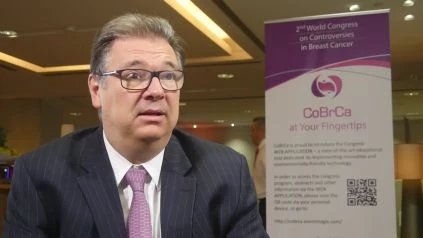Antonio Llombart, MD, PhD, of the University Hospital Arnau de Vilanova, Valencia, Spain, discusses new combination treatments for patients with breast cancer at the 2016 World Congress on Controversies in Breast Cancer (CoBrCa) in Barcelona, Spain. He explains that it has been known for almost 40 years that endocrine therapy is the most important treatment for patients with endocrine dependent estrogen receptor-positive early breast cancer. We have been treating these patients with anti-endocrine therapies such as ovarian suppression for more than one century. At some point in the past, the value of ovarian suppression was questioned because it was replaced by endocrine treatments like tamoxifen. However, the question remained whether increasing or adding ovarian suppression to tamoxifen could increase the activity and the prevention for premenopausal patients with endocrine sensitive tumours. Unfortunately for many years, the trials were run with a lot of problems. The main one was that patients also received chemotherapy, which influenced the menopausal status and the trial did not show any benefits. However, in the last 10 years two important trials have been run for premenopausal patients. The trials show that when you combine ovarian suppression with endocrine therapy, the benefits are superior to tamoxifen alone. This, however, does not mean that all patients should receive these combination treatments. It is an option that could be recommended for patients with high risk tumors. Right now the problem we have in early breast cancer premenopausal patients is about deciding the good candidates for this treatment. This is because with this treatment, uncomfortable toxicities are increased. These include a loss of sexual appetite, weight gain and hot flushes, in a way that it can affect quality of life. He ends by explaining that it is a question of balance where it is not just about what is the best treatment but also a negotiation with the patients about what the objectives are.
Combination treatments for premenopausal breast cancer: endocrine therapy and ovarian suppression

